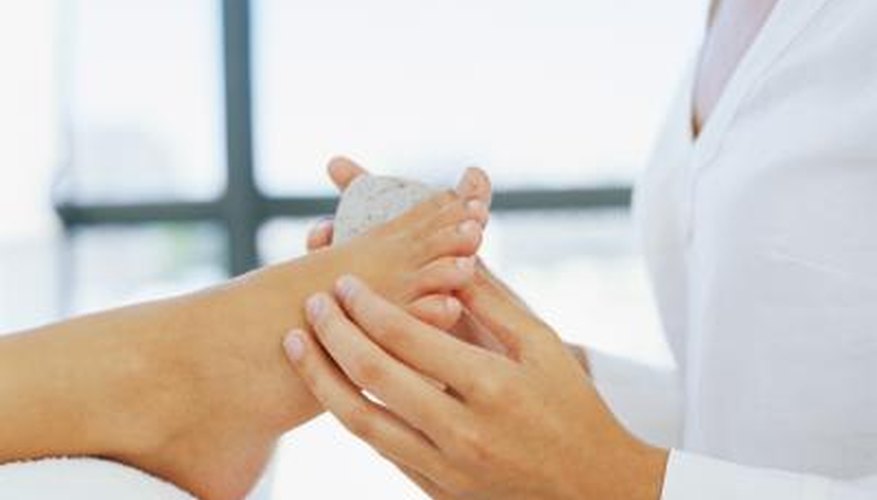Pumice forms naturally from lava. As lava from a volcano dries, it hardens. During the process, volcanic gas escapes, causing pores in the stone that look like craters. Pumice stones are used as abrasives to slough away dry skin and calluses. Many people search for substitutes to pumice stone because bacteria can easily collect in the porous surface and transfer to the skin, causing infection.
Hand and Foot Files
Foot and hand files make a convenient alternative to a pumice stone. Emery hand and foot files covered with an abrasive similar to sandpaper smooth skin. Emery paper does wears out and becomes less effective after multiple uses. Glass foot and hand files feature a textured surface design similar to that of the emery hand and foot files. Though they never wear out, they may break if dropped. Hand and foot files embedded with real diamond chips function the same way as the other files, but they are the most durable, and expensive.
- Foot and hand files make a convenient alternative to a pumice stone.
- Hand and foot files embedded with real diamond chips function the same way as the other files, but they are the most durable, and expensive.
Metal Scrapers
Metal scrapers designed to shave off calluses come in different designs. Those designed like a grater require a soft touch during use to avoid removing too much skin. Battery-operated micro files designed to remove calluses gradually shave calluses away as they are moved back and forth over the skin. Despite cosmetology laws against their use, some nail salons still use a sharpened metal blade similar to a razor blade to reduce calluses. You can find these tools in a beauty supply store for use at home, but exercise caution if you decide to use one, because you can easily cut yourself and acquire a serious infection.
- Metal scrapers designed to shave off calluses come in different designs.
- Those designed like a grater require a soft touch during use to avoid removing too much skin.
Clay Vessels
A terra cotta vessel designed to serve as an abrasive makes a good alternative to the pumice stone. The terra cotta vessels usually come with two sides, one designed to remove dead skin and calluses, and the other side to smooth and polish the skin. Terra cotta exfoliating vessels work best when used at the end of a bath or shower, because the calluses have become softer, therefore easier to remove. Many people find terra cotta exfoliating vessels to be a cost-efficient method of callus removal because they may be reused.
- A terra cotta vessel designed to serve as an abrasive makes a good alternative to the pumice stone.
- Terra cotta exfoliating vessels work best when used at the end of a bath or shower, because the calluses have become softer, therefore easier to remove.
Sloughing Creams and Scrubs
Make a simple natural alternative to a pumice stone at home by combining salt or sugar with jojoba or almond oil. Smooth it on the hands or feet to remove dead skin. Sloughing creams and scrubs containing crushed pumice stones can be found at beauty product stores. Another alternative to pumice uses the crushed shell of nuts such as walnuts or almonds in a cream to exfoliate dead skin.
- Make a simple natural alternative to a pumice stone at home by combining salt or sugar with jojoba or almond oil.
- Another alternative to pumice uses the crushed shell of nuts such as walnuts or almonds in a cream to exfoliate dead skin.
